- 13 Oct 2023
- 3 Minutes to read
- Print
- DarkLight
Katalon Studio
- Updated on 13 Oct 2023
- 3 Minutes to read
- Print
- DarkLight
Overview
Katalon Studio enables you to perform automated Mobile and Web Testing by creating codeless automation scripts and with a powerful record and playback feature. Integrating Katalon Studio with pCloudy will help you run your existing scripts on 5000+ browsers and device combination.
Prerequisites
- pCloudy Account and the pCloudy capabilities.
- Mobile Application must be uploaded to the “My Data” section on pCloudy portal.
- Katalon Studio configured on the user machine.
Running Katalon Tests on pCloudy Device cloud
- Open an existing project on Katalon which you want to Execute.
For Example: Here we are using a sample test case as mentioned below using “Mobile keywords”, where we Launch an application (Android) and click on two elements and close the application. Note: Provide the application name for the “Input” of ‘Start Application’ Keyword.

- To generate the capabilities, you can use the Capability Configurator from the pCloudy portal as mentioned below.
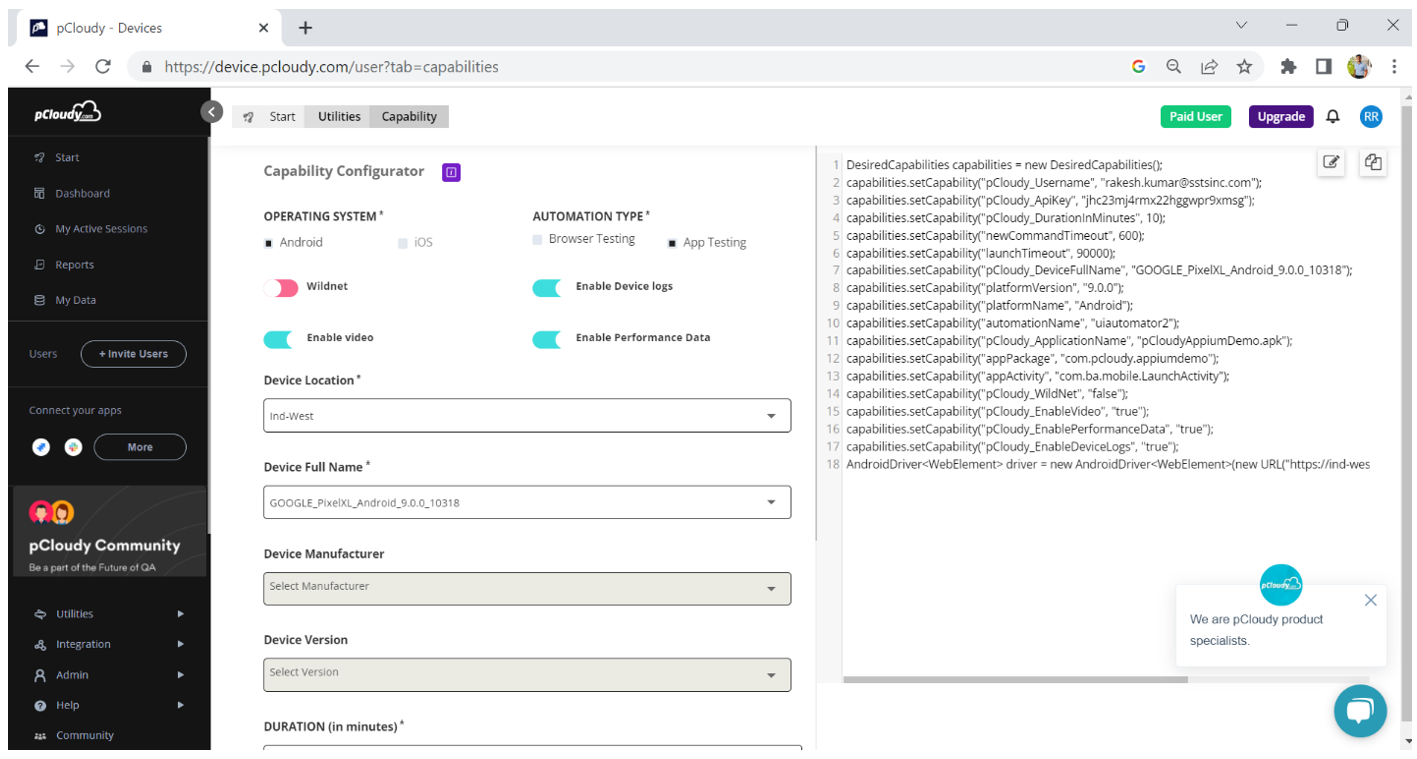
- The URL for the device cloud is included with the capabilities.
- Make sure the selected device is available on device cloud before running.
- You can also get the API key from the profile section on pCloudy portal as mentioned below.

To add the capabilities on Katalon remote server, Click on the Project →Settings →Desired Capabilities →Remote
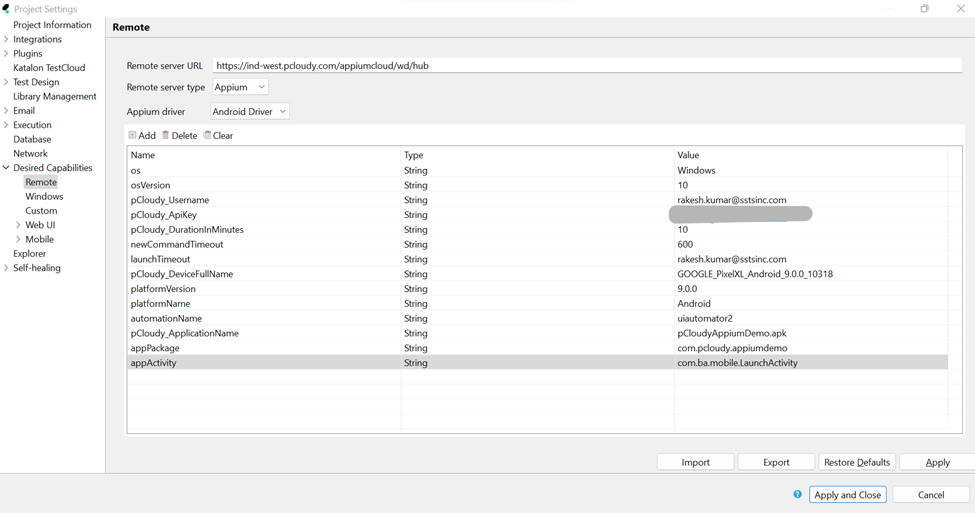
Now choose “Remote” from the “Run” options
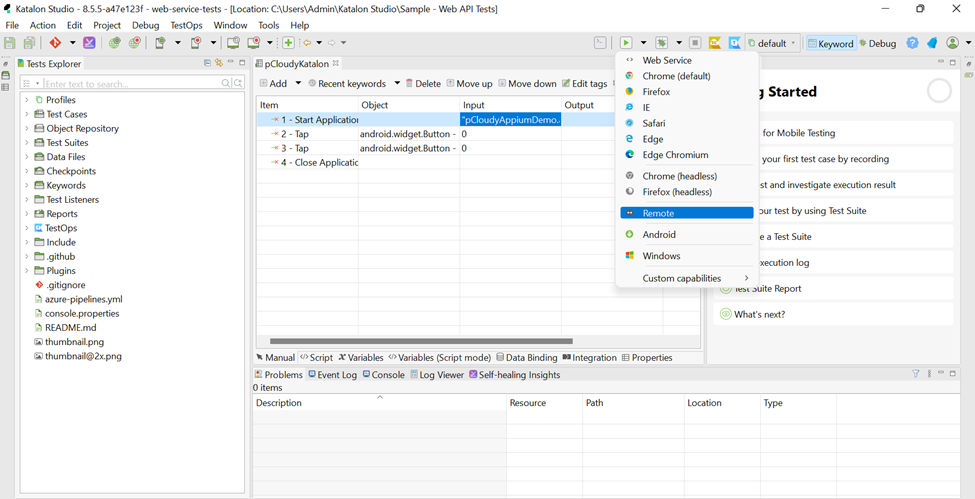
Now the mentioned device from the capabilities will be acquired on pCloudy and the scripts will be executed. You will be able to view the live session under “My Active Sessions” on pCloudy portal.

Using Katalon’s Record Mobile Feature on pCloudy Devices
Choose “Remote Devices” from the “Record Mobile”
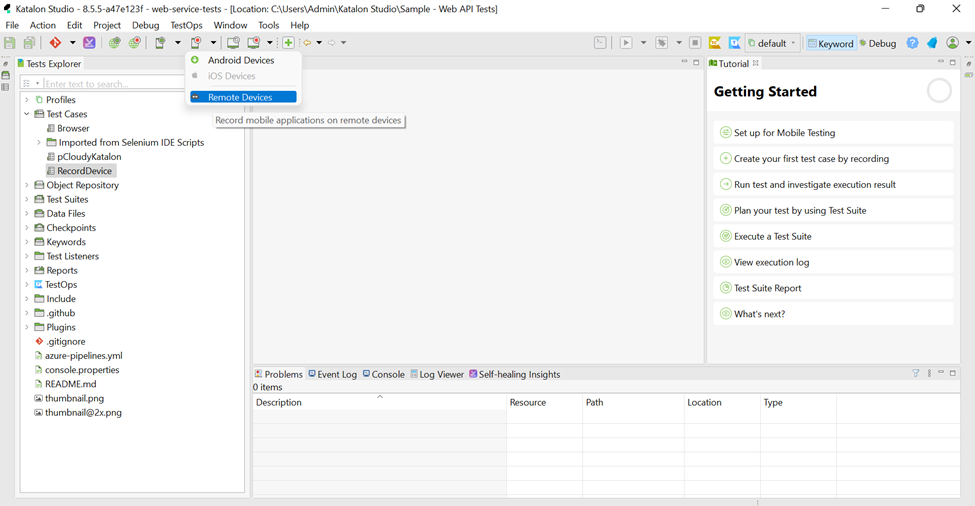
Provide the Application name for the “Cloud Application ID” and click on “Start”.
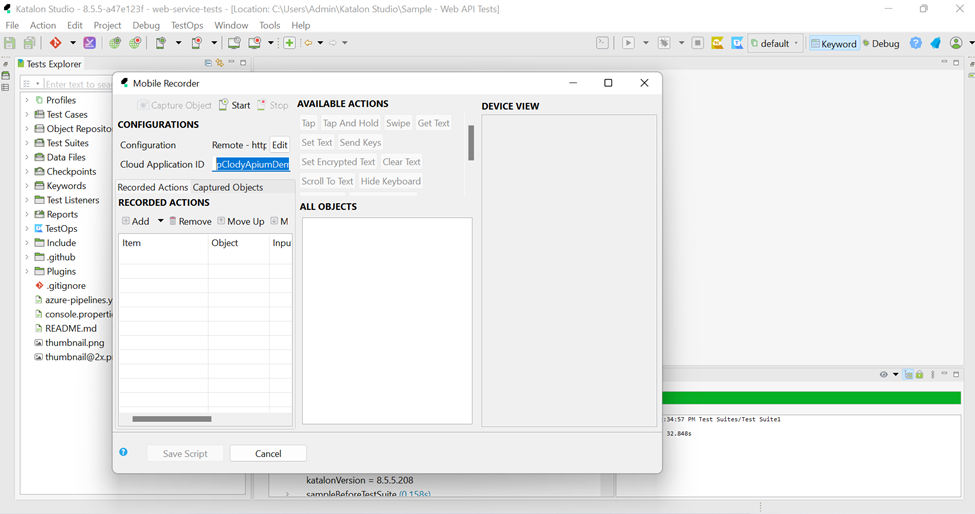
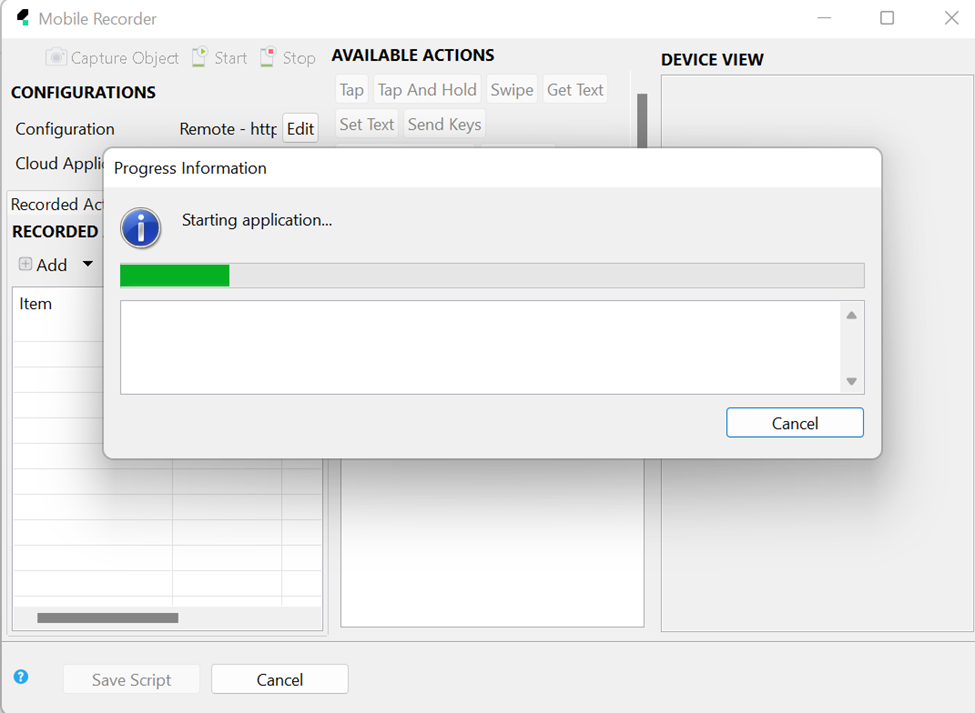
Now you can record the steps on the application via pCloudy device and create the steps for the test and all the objects will be stored inside “Object Repository” on Katalon.
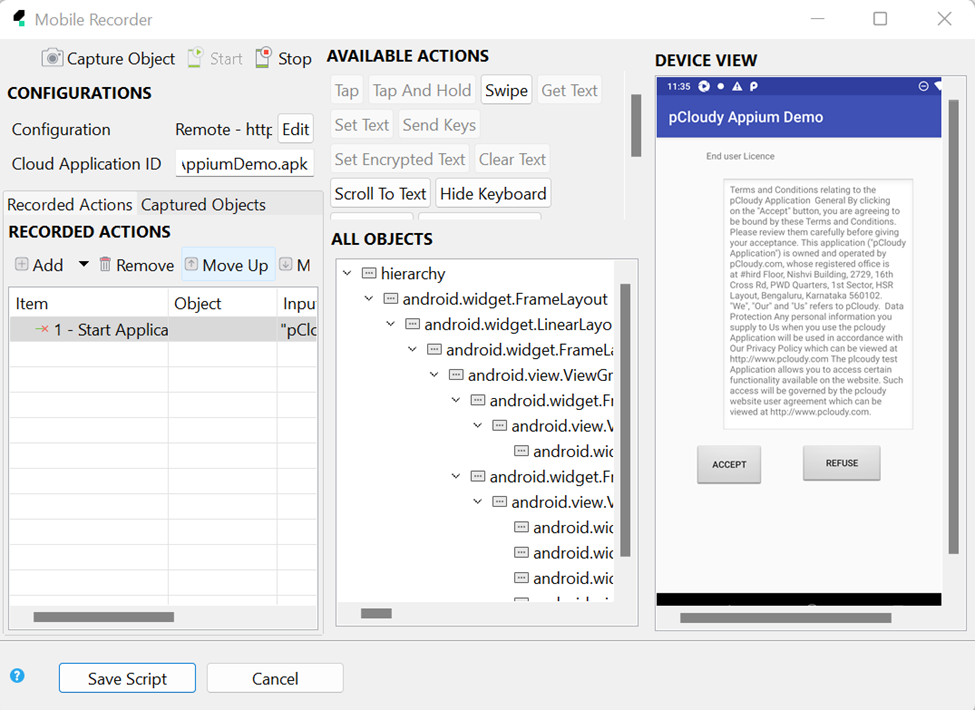
Here we are choosing the “Accept” icon from the application and performing a “Tap” action on it.


As Mentioned, the recorded objects will be stored into “Object Repository” as shown below on Katalon.

Running Katalon Tests on pCloudy Browser Cloud
- Open an existing project on Katalon which you want to Execute.
For Example: Here we are using a sample test case as mentioned below with “Web UI Keywords”, where we open a browser and navigate to an URL and close the browser.

- To add the capabilities for Browser Cloud on Katalon remote server, Click on the Project →Settings →Desired Capabilities →Remote
For Example: If you want to connect to chrome browser on windows with the following specification, then the capabilities will be as mentioned below
• “os”=”Windows”
• “osVersion”=”10”
• “browserVersion”=”110”
• “browserName”=”chrome”
• “clientName”=”pCloudy login ID”
• “email”=”pCloudy login ID”
• “apiKey”(You will get the Browser Cloud URL and API Key from the profile section on the pCloudy portal)


- The URL for the browser cloud is "https://prod-browsercloud-in.pcloudy.com/seleniumcloud/wd/hub".
- Make sure the selected device is available on browser cloud before running.
Now choose “Remote” from the “Run” options
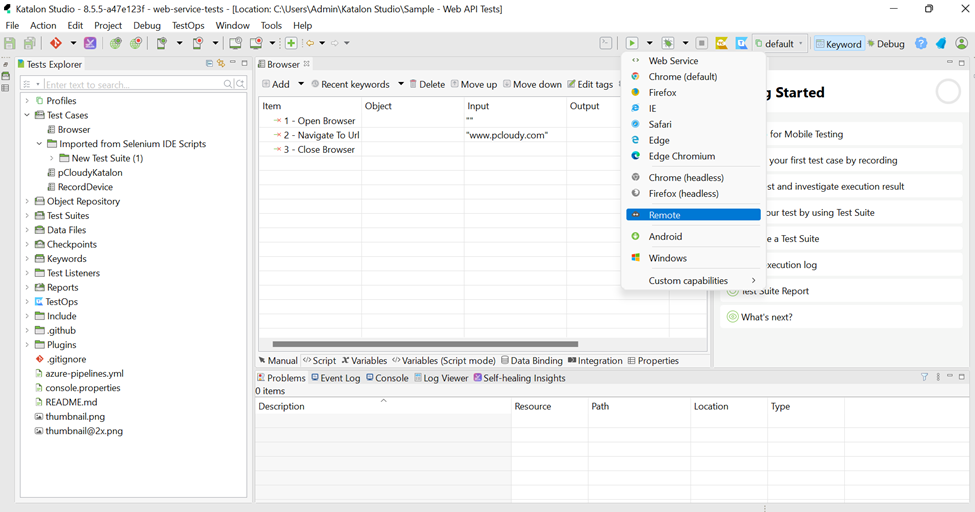
Now the mentioned device from the capabilities will be acquired on pCloudy and the scripts will be executed. You will be able to view the live session under “My Active Sessions” on pCloudy portal.

Running parallel tests using Katalon on pCloudy Browser Cloud
- Create multiple Test Cases(Example: Testcase1 and Testcase2) as mentioned below on Katalon.


Create two different Test Suites (Example: Test Suite 1 and Test Suite 2) and add the Test Cases to each Test Suites as mentioned below.
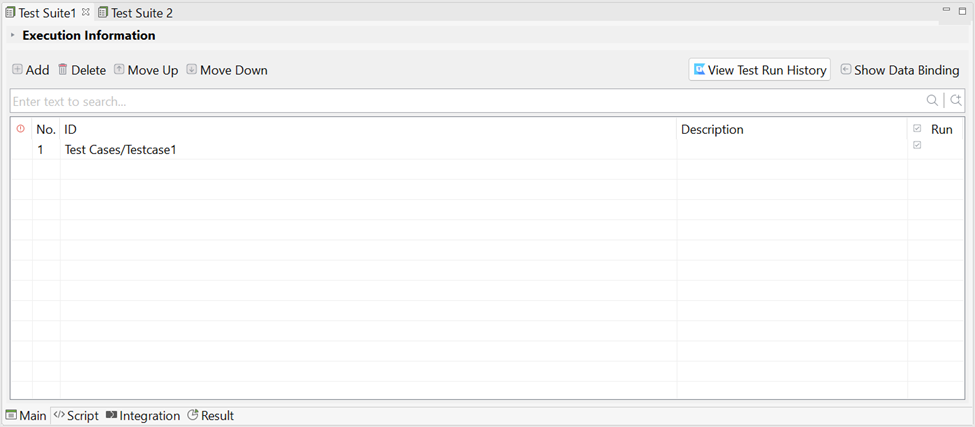
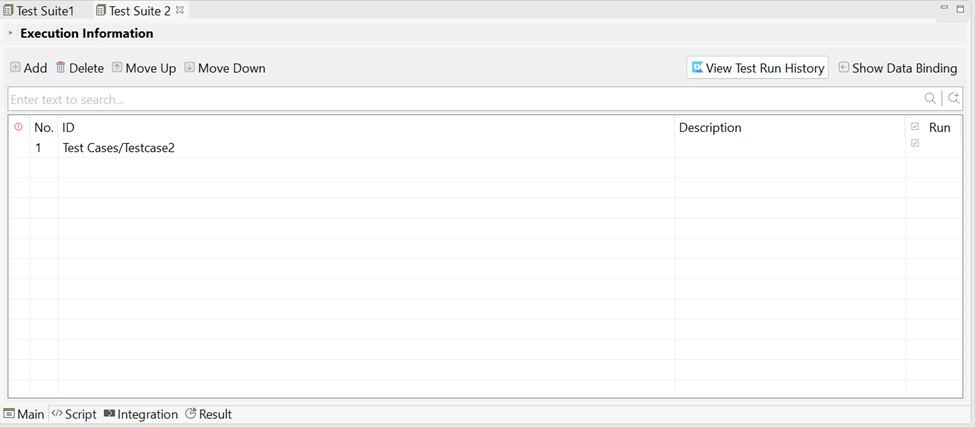
Now create a Test Suite Collection (Example: pCloudy Testsuite Collection) and add the Test Suite 1 and 2 to the Test Suite Collection as mentioned below.
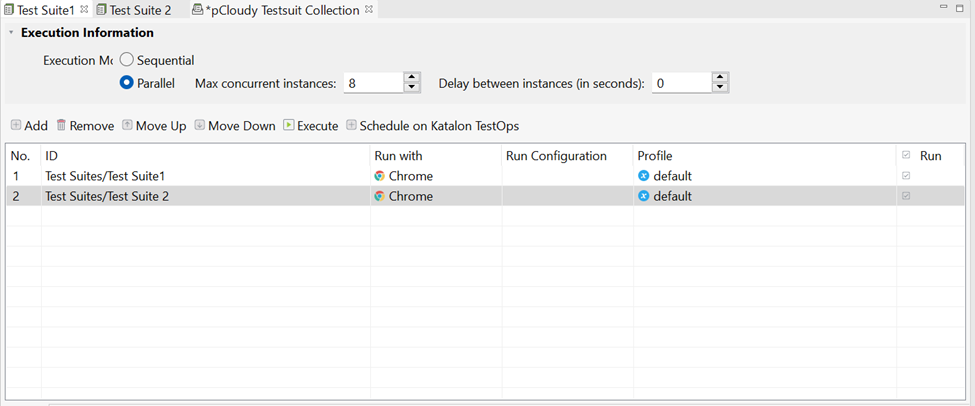
Now Open “Execution” from “Project Settings” and select “Remote” from “Default execution” and Check the “Post Execution Options” as mentioned below.
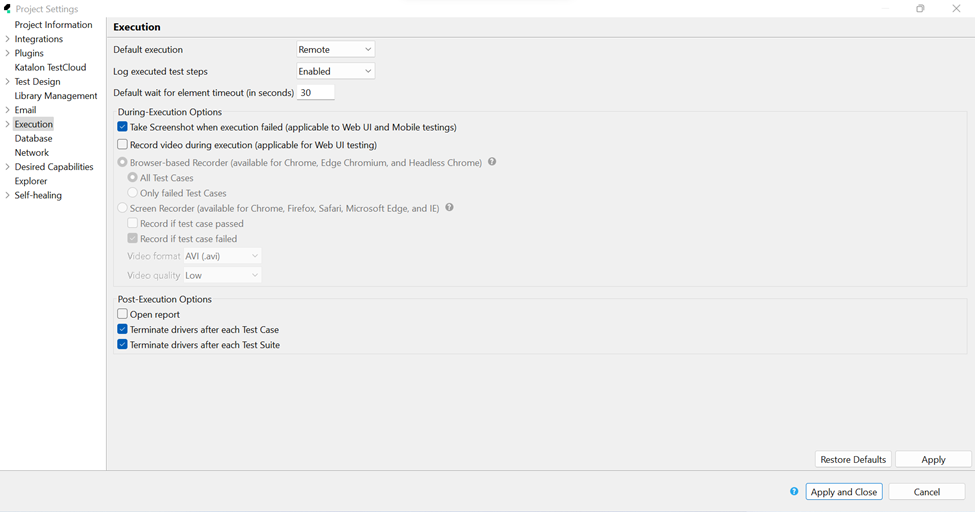
Now select the “Run Environment” to “Remote” and select “Parallel” from the “Execution Mode” and Click on “Execute”.
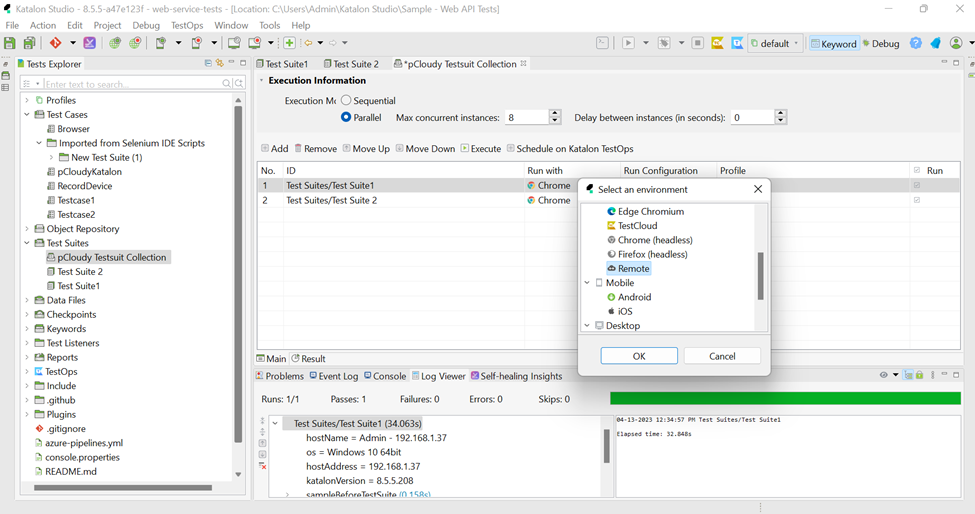
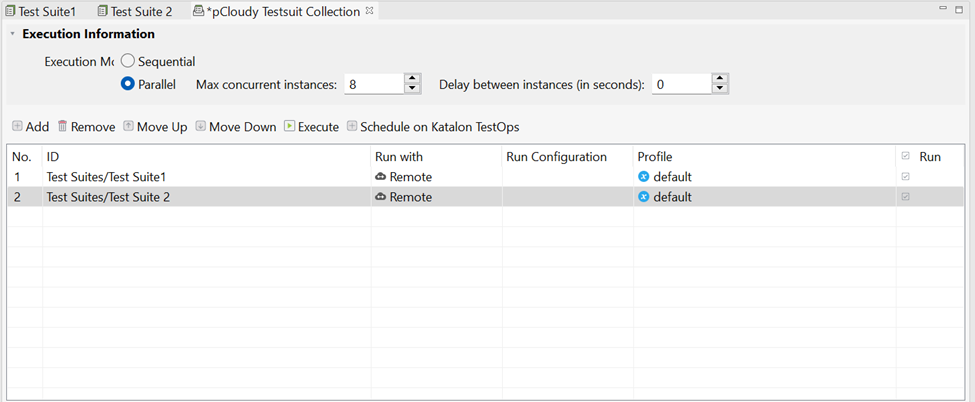
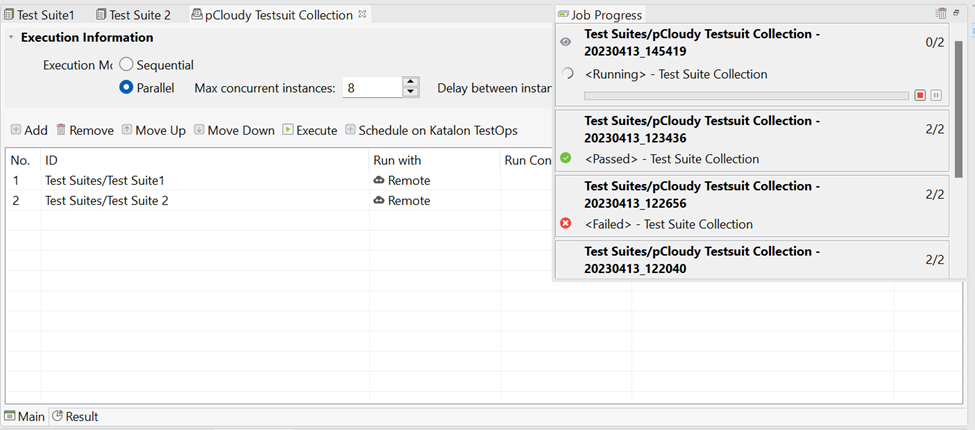
Now the mentioned browser from the capabilities will be acquired on pCloudy and the scripts will be executed. You will be able to view the live session under “My Active Sessions” on pCloudy portal.




















